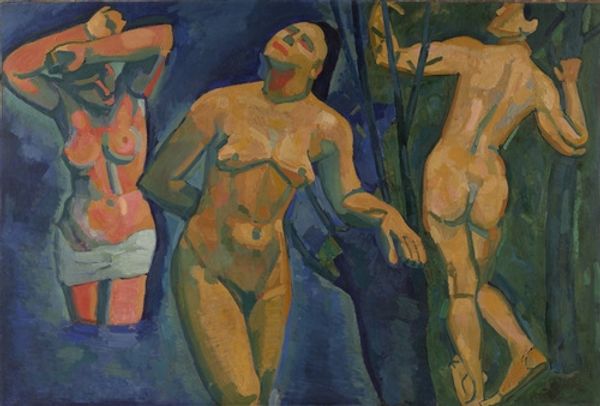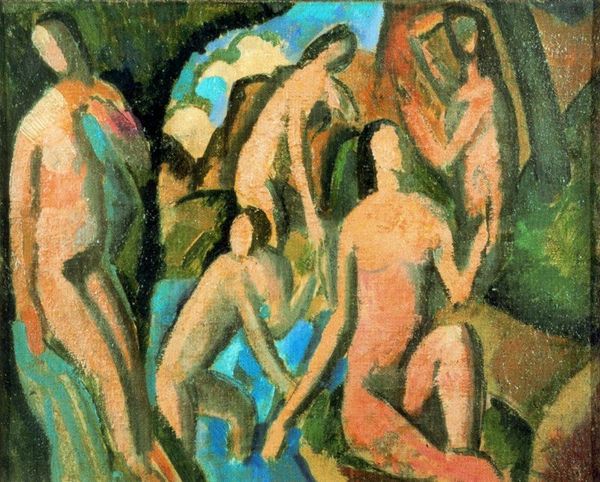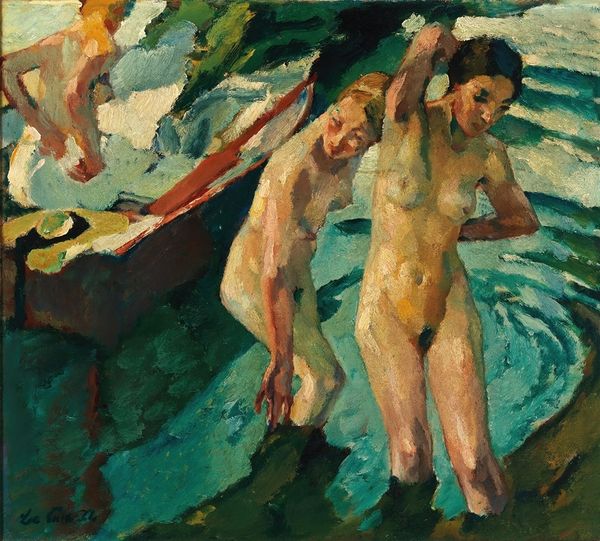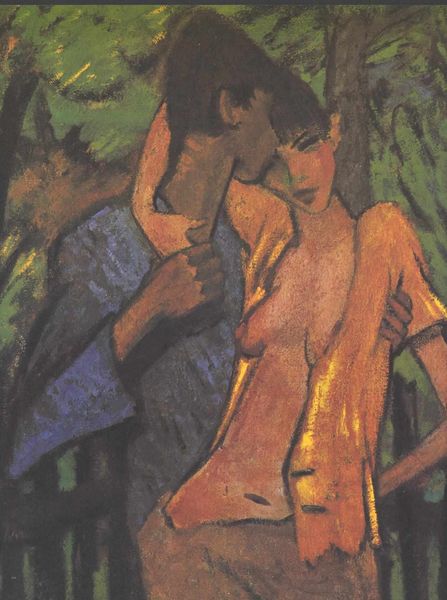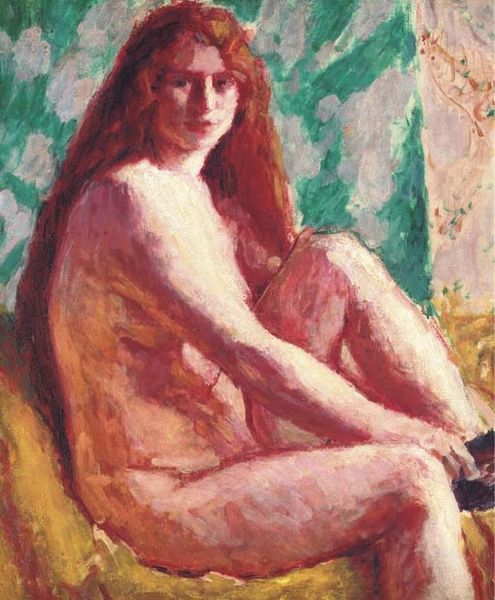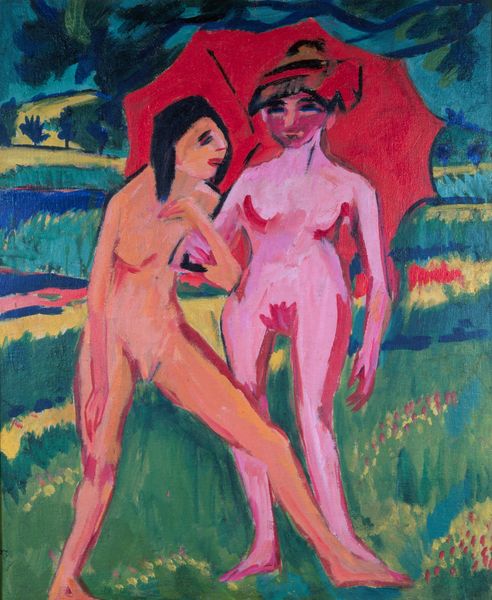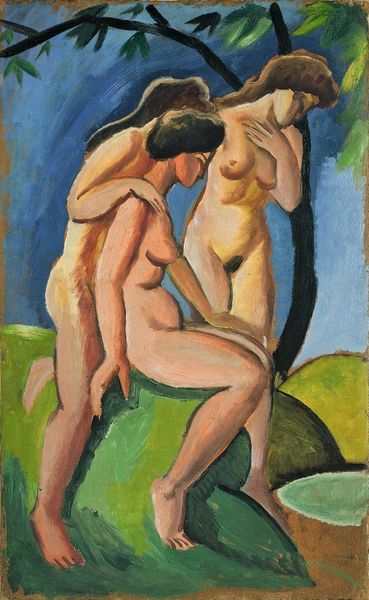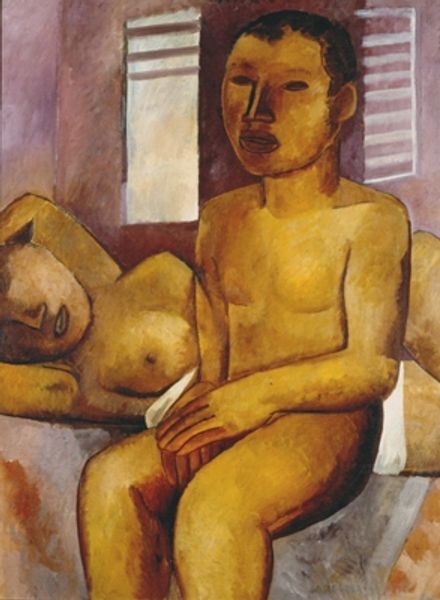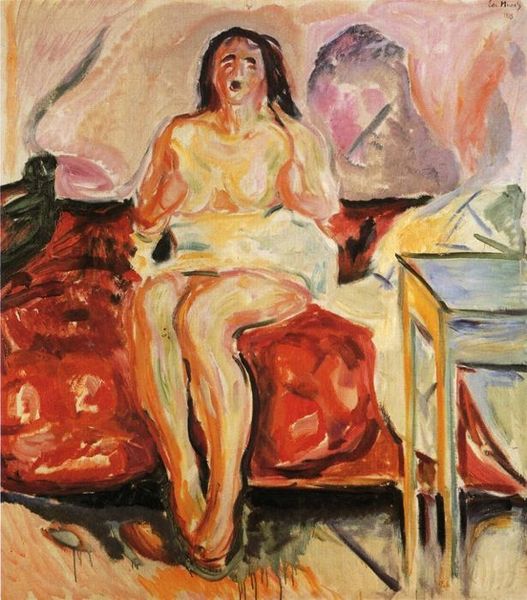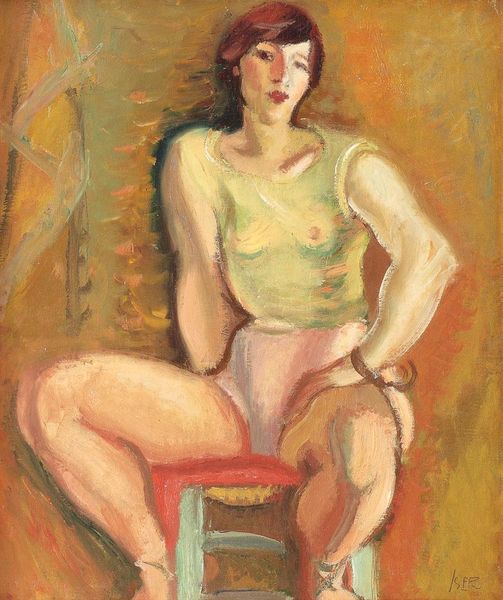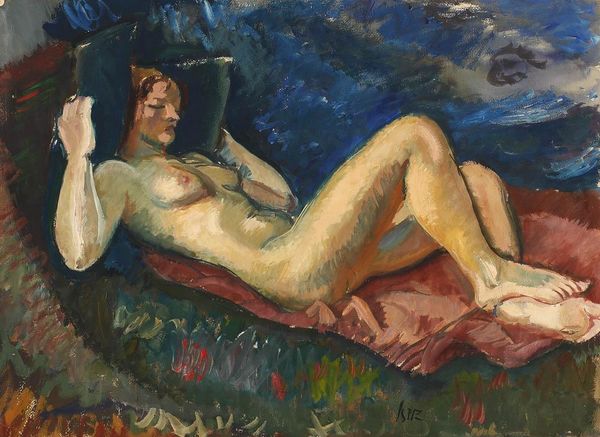
oil-paint
#
portrait
#
oil-paint
#
figuration
#
oil painting
#
expressionism
#
facial portrait
#
nude
#
portrait art
#
modernism
#
fine art portrait
#
expressionist
Copyright: Public domain
Editor: Vilmos Aba-Novak’s 1925 painting, "Combing (Woman Combing, The Artist's Wife)," rendered in oil paint, presents two female figures in what appears to be a private, almost primal moment. I am immediately struck by the raw emotion conveyed through the figures' poses and the vibrant, almost jarring, use of color. What visual symbolism do you observe in this portrait? Curator: Indeed! The rawness speaks volumes. Note the heavy outlines and the bold, unnatural colors – reds, yellows, greens – used to depict flesh. This isn't about capturing reality; it's about conveying an emotional truth. Consider the act of combing. Hair has always held symbolic weight, often connected to sensuality and power. Here, in this domestic scene, is the woman vulnerable or assertive, trapped in her domestic role, or empowered by her self-care ritual? Look at how she touches her hair. Does it recall similar moments of women caught in contemplation throughout art history? Editor: That’s a great observation. The act of combing does seem deliberate. I wonder about the other symbols, like the pears? Curator: Excellent point. Fruit, especially pears, can signify fertility, abundance, but also the fleeting nature of earthly pleasures. Are they fresh or about to turn? The Expressionist style, with its emphasis on subjective experience, invites multiple interpretations. Is it a lament, or a celebration, or perhaps a mixture of both? What is more intriguing about the backdrop, its function in this intimate setting? Editor: That's fascinating, especially when considering that the painting portrays the artist’s wife. I see the expressive elements through a different lens now. Thanks so much! Curator: My pleasure! It’s in connecting the seemingly disparate visual cues that we can unpack cultural memory imbedded into the symbolic representation.
Comments
No comments
Be the first to comment and join the conversation on the ultimate creative platform.
